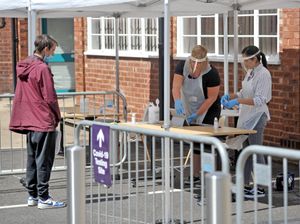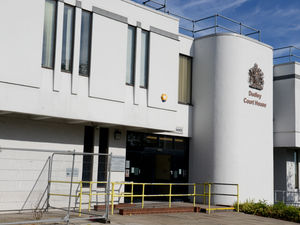Wolverhampton deaths more than doubled during worst period of crisis
Wolverhampton experienced more than twice as many deaths as normal during the worst period of the coronavirus crisis, new analysis has revealed.

The number of excess deaths in the city hit a peak in the week ending April 13 – with 143 per cent more deaths than the average for the previous five years.
Overall, the area had more deaths than usual in 13 of the 15 weeks between March 6 and June 12.
Elsewhere in the Black Country, Dudley hit its peak in the week ending April 10 with 127 per cent more deaths; Sandwell hit the peak the week ending April 17 with 156 per cent more deaths; and Walsall’s peak was the week ending April 17 with 193 per cent more deaths than the average for the previous five years.
And in Staffordshire, the county hit a peak in the week ending April 24, with 138 per cent more deaths than the average for the last five years. The King’s Fund think tank said coronavirus has exposed the “widening health divide” in the country, after Office for National Statistics (ONS) revealed every part of the country had seen an increase in deaths.
The ONS found by the end of May, England had the highest level of excess mortality in Europe, at eight per cent above normal – ahead of Spain at seven per cent and Scotland at five per cent.
The ONS added deaths were less concentrated in the UK than with the hotspots seen in other nations.
The charity the Health Foundation said this more uniform spread of the virus could explain why Covid-19 has taken such a “huge and deadly toll” on the country, although it also questioned whether the timing of the lockdown had been a factor.
Charles Tallack, of the Health Foundation, said: “Areas for investigation should include what proportion of the population were infected before lockdown began and whether lockdown measures were introduced quickly enough.”
Regions in Spain, Italy and England made up the top 20 areas across Europe with the highest recorded peak mortality rates, with the highest in Bergamo, in Italy – 848 per cent above normal in the week ending March 20.
Brent was the worst affected area in England – 358 per cent in the week ending April 17 – but it was joined by two other London boroughs – Enfield and Ealing – and Thurrock, in Essex.
Dr Veena Raleigh, senior fellow at The King’s Fund, said the pandemic has exposed “the wide and widening health divide” in the UK population. She said: “Over the past decade, life expectancy improvements in the UK have lagged behind our European peers.
“The priority for the UK is to control the pandemic and learn lessons ahead of a potential second wave, but it is also essential to tackle the underlying reasons for stalling life expectancy in recent years – many of which contribute to poor Covid-19 outcomes.”
A Government spokesman said: “This is an unprecedented global pandemic and our understanding of its impact on different countries and societies will improve as we learn more.
“At all stages we have been guided by the latest scientific advice, and the action we have taken has allowed us to protect the vulnerable and ensure the NHS was not overwhelmed, even at the virus’ peak.”





